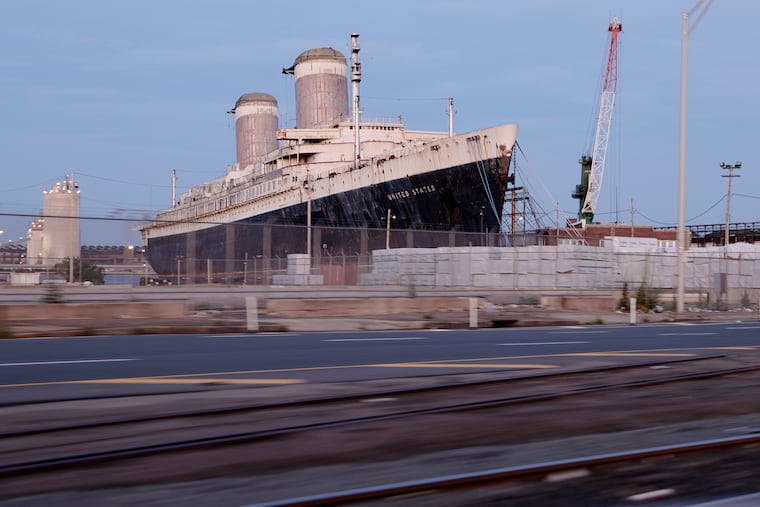Some officials in Florida want to sink the SS United States. The ship’s stewards say not so fast.
The SS United States Conservancy sees the step as a ‘fallback scenario.’

Where can a gutted 1,000-foot ship, incapable of self-propulsion find a new lease on life after getting slapped with an eviction notice?
Escambia County, Fla., according to some civic leaders, who are eyeing to bring the SS United States to Pensacola waters, already raising $21,000 for the cause this month.
Members of Escambia’s Special Marine Advisory Committee met Monday and unanimously voted to try and bring the ship from its South Philadelphia berth to Florida, according to a report from the Pensacola News Journal.
The catch? They want to sink the ship and turn it into an artificial reef, an avenue the SS United States Conservancy, the vessel’s stewards, say is “clearly not” their first choice.
“Our highest priority remains locating a safe temporary or permanent location for the ship and ultimately her redevelopment as a dynamic stationary, mixed-use destination,” according to a statement from the Conservancy when asked about conversations with Escambia County.
» READ MORE: After order to leave South Philly, the SS United States’ options include being sunk or sold for scrap
Still, the Conservancy and the ship find themselves in a difficult position with dwindling options.
A rent dispute with their landlord ended in a major loss. Now the vessel must vacate its South Philadelphia berth by mid-September. The Conservancy filed a motion asking the judge to reconsider the timeline, citing the logistical difficulties with moving a behemoth of a ship, as well as the looming hurricane season. The judge has yet to weigh in and in the meantime, the Conservancy continues its search for a potential partner.
Several port authorities and other entities have already said they can’t take the vessel or lack suitable docks. The Philadelphia Navy Yard, the Virginia Port Authority, the Maryland Port Authority, the North Carolina State Ports Authority, the South Carolina Ports Authority, the Georgia Ports Authority, and the Florida Ports Council have been ruled out for now, according to court filings.
Newport News Mayor Phillip Jones has expressed interest in becoming the ship’s next host, but there are no piers available there either.
The Conservancy would ideally be able to buy itself more time through a judge’s order or a temporary berth where it could continue to pursue a redevelopment partner. The cost of the type of redevelopment the Conservancy would like to see is estimated to run upward of $400 million.
Absent of those measures, the vessel risks being scrapped for metal, increasing the appeal of sending the ship to Escambia County, which has reefed a ship like the SS United States before.
Federal and local agencies joined forces to sink former naval warship USS Oriskany in nearby Pensacola waters back in 2006. The ship has helped attract divers and one member of the advisory committee told the Pensacola News Journal the community saw a $150 return for every dollar invested. Yet the committee believes that the Oriskany needs company in order to keep those tourism numbers up, hence the interest in the SS United States.
The New York Times reported it cost the Navy $20 million to clean the Oriskany for sinking. But an advisory committee member estimated the cost of transporting and preparing the SS United States for sinking would run $10 million, according to the News Journal.
Attempts to reach members of the Florida advisory committee were unsuccessful but a source familiar with ongoing conversations between the conservancy and the group said the conversations remain ongoing, though both sides still have questions on what the reef move would look like.
In its statement, the conservancy described the merits of turning the ship into a reef. It would help the ship avoid the scrapyard, should it come to that, and help retain the vessel’s economic and tourism potential. Because of this, the conservancy said it is open to that step the ship as a “fallback scenario.”